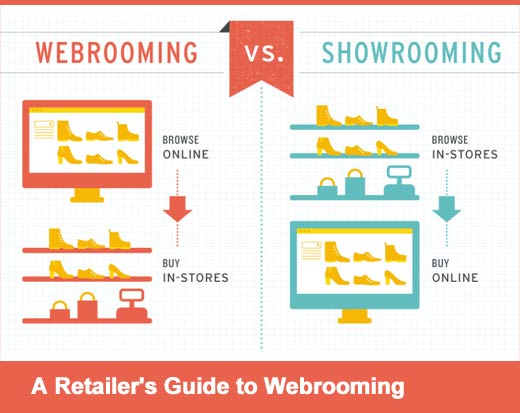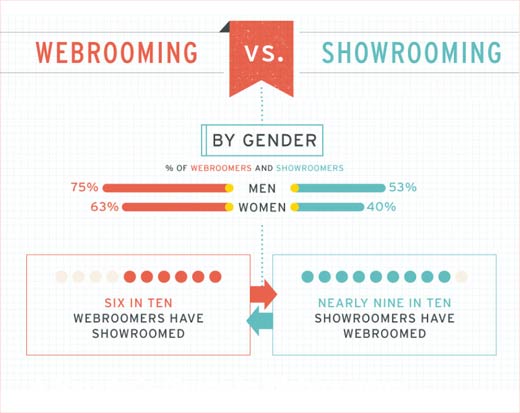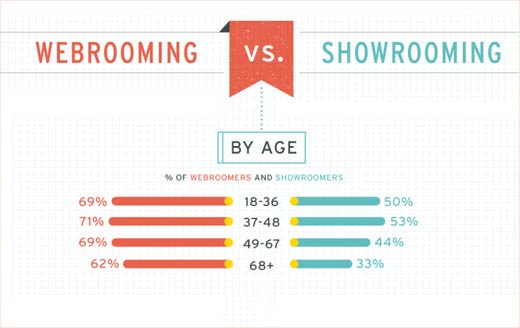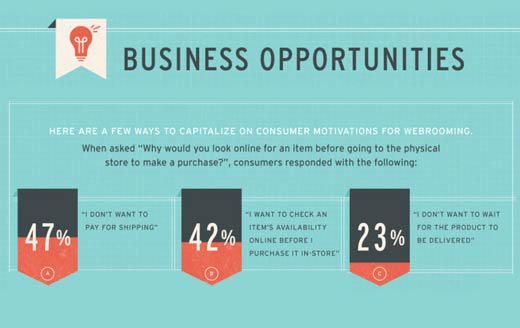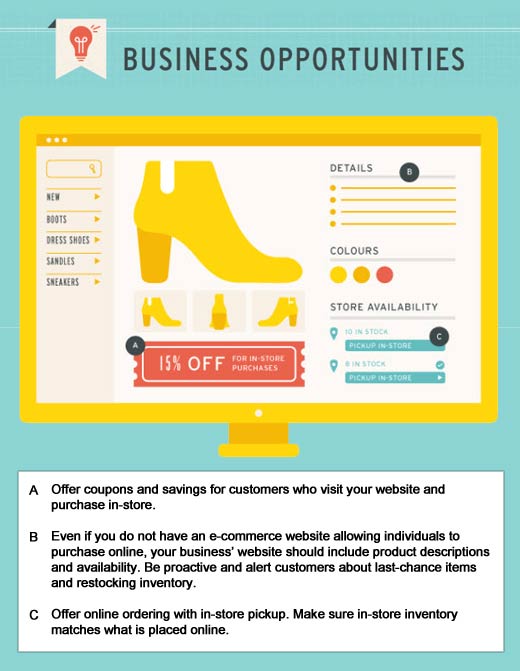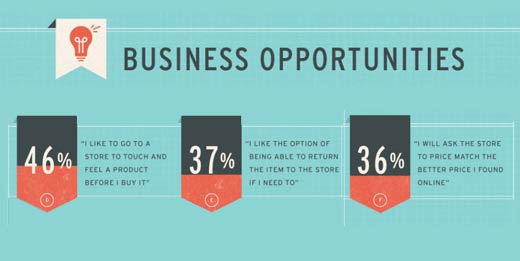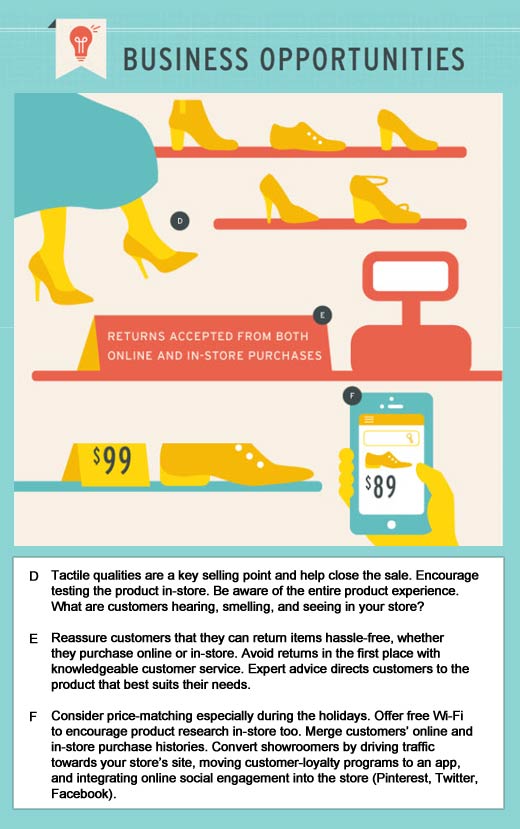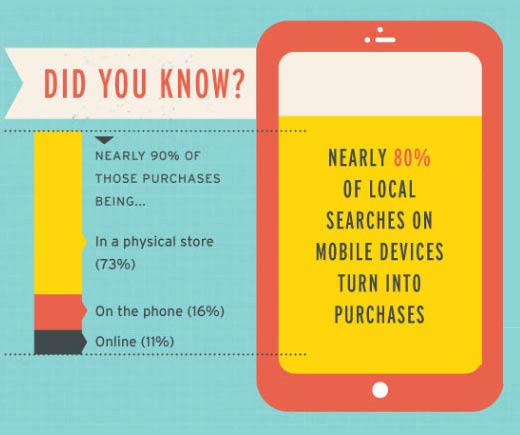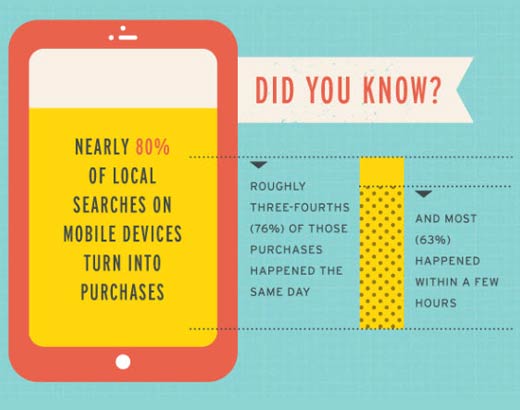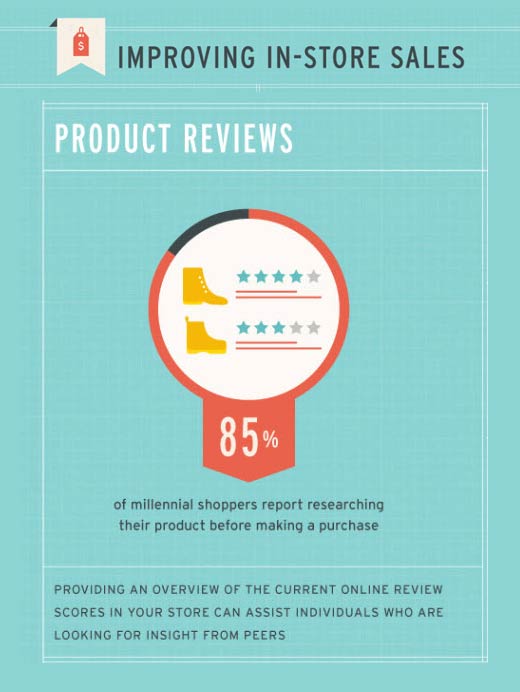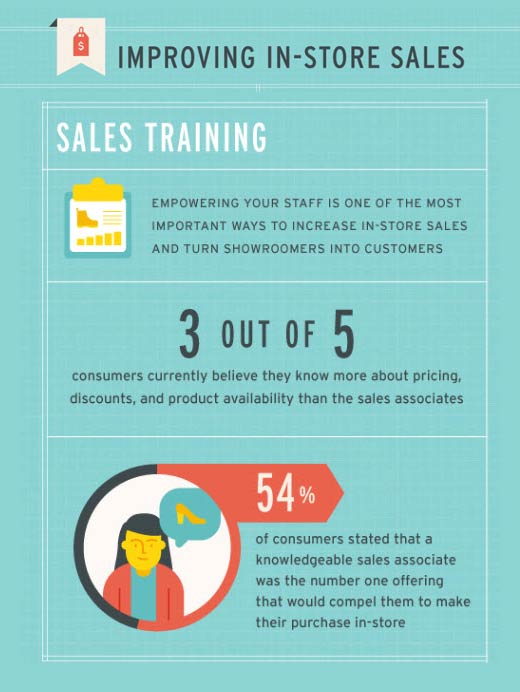Brick-and-mortar stores are feeling the heat from online retailers, especially with the customers browsing in-store and buying online.
But the showroowing effect is not the only way shoppers are changing their habits. In this slideshow, Merchant Warehouse explores how reverse-showrooming or ‘webrooming’ is shifting the opportunity back to the brick-and-mortar stores, and offers tips on how your business can take advantage.
Reverse-showrooming or ‘webrooming’ is shifting opportunity back to brick-and-mortar stores. Check out these tips on how your business can take advantage, as identified by Merchant Warehouse.
Webrooming vs. Showrooming – Gender
Browsing online and purchasing in-store seems to be trumping showrooming. Approximately 75 percent of male shoppers webroom, while 53 percent choose to showroom. Female buying habits are similar with 63 percent making in-store purchases after browsing the Web and 40 percent doing the reverse. Additionally, 9 out of 10 showroomers have also webroomed, but only 6 out of 10 webroomers have showroomed.
Webrooming vs. Showrooming – Age
The amount of webrooming consumers between the ages of 18 and 67 hovers around 70 percent. Showrooming in this age group varies; shoppers between the ages of 18 and 48 fall near the 50 percent mark, and 44 percent of shoppers between ages 49 and 67 choose this option. Only 33 percent of shoppers in the 68+ category prefer showrooming, while 62 percent are webroomers.
Business Opportunities
Brick-and-mortar retailers can capitalize on this growing trend by focusing on what motivates consumers to choose webrooming in the first place. When shoppers were asked why they would search for items online prior to making a store purchase, the responses varied. Approximately 47 percent wanted to avoid shipping costs, 23 percent didn’t want to wait for delivery of the items, and 42 percent wanted to check product availability.
What You Can Do
Providing online order forms, allowing in-store pickup and including product descriptions and availability are easy ways to address these concerns. Offering savings or coupons to consumers who browse the website but make in-store purchases may expand the actual customer base as well. Retailers should also provide alerts regarding last-chance purchases and inventory restock.
More Ways to Capitalize
Consumers want to experience stress-free shopping, and those polled responded with concerns that express this desire. Roughly 37 percent would choose webrooming because it’s easier to return a product to the actual store, and 46 percent prefer physically feeling an item before making a purchase. Additionally, being able to pay online prices for store-bought products is important to 36 percent of the consumers.
What You Can Do
Capitalizing on these factors requires an overall awareness of the entire product and shopping experience. Offering hassle-free returns for any online or store purchase is a good beginning. It may be useful to encourage product testing and offer authoritative advice helping customers find the best items. Retailers should also match online prices and offer free Wi-Fi as an incentive so that customers can research costs on-site.
Taking Advantage of the Mobile Universe
More and more people are using smartphones and other mobile devices, which means the amount of online retail browsing is still on the rise. About 80 percent of all local searches performed on mobile devices result in actual purchases. Roughly 73 percent of these purchases are in brick-and-mortar stores, while 16 percent are by phone and 11 percent are online.
Taking Advantage of the Mobile Universe
Slightly more than three-quarters of these purchases occur the same day as the search, and 63 percent take place within just a few hours. Store retailers can make the most of these shopping behaviors by focusing their marketing efforts on mobile applications. Using social networks such as Facebook, Twitter and Pinterest as tools to shift online interest to the store is also beneficial.
Increasing Store-Based Sales
There are several simple ways to improve in-store sales while adapting for the webrooming population. One method is to be transparent about the store’s review scores. Providing a summary of up-to-date Internet reviews inside the store will entice those who research products before buying. This includes 85 percent of modern-day shoppers, so making the small effort can pay off.
Increasing Store-Based Sales
Empowering and training staff members are also key methods for increasing profits. Three out of five consumers claim to have more knowledge on product availability, costs and discounts than store sales associates. When asked, nearly half of the consumers agreed that a well-informed sales associate would be a primary motivation for making a purchase in the store.
Although many physical retail stores are suffering due to Internet-focused buying tendencies, it’s not too late to turn things around. By improving the in-store shopping process, retailers can convert showroomers into real customers and take advantage of the webrooming effect. When making these changes, it’s best to unify all the relevant store, mobile and Web channels. This will create a continuity and flow for each customer experience.


